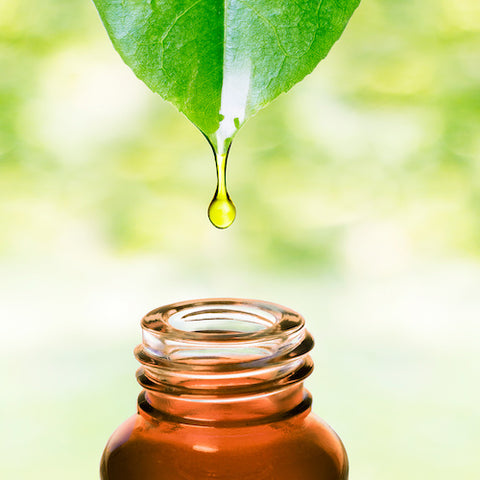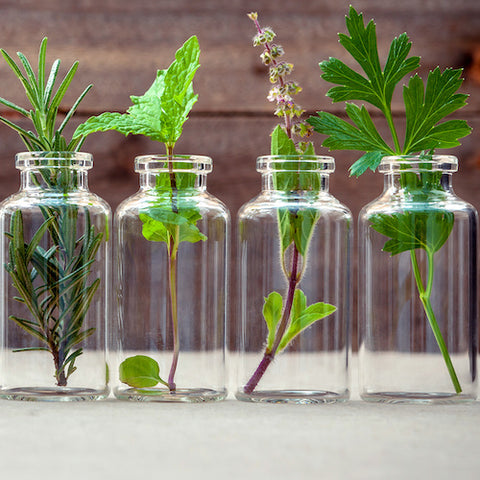Cart is empty
0 Products
FREE DOMESTIC SHIPPING OVER $100. MADE BY NATURE. PERFECTED BY SCIENCE.
FREE DOMESTIC SHIPPING OVER $100.
Cart is empty
0 Products
Reading Time - 7 min
Whether you’re a cannabis connoisseur or an aromatherapy aficionado, you’re probably somewhat familiar with terpenes. Even if neither of those is your jam, you’ve most likely run into the terpene topic. Terpenes help shape a vast number of our experiences and we’re learning more and more about their potential therapeutic effects too.
Maybe you think taste and smell aren’t THAT important in the grander scheme of things, but they’re some of the most important ways we engage with the world around us.
Still not convinced? Keep reading!
The cool thing about terpenes is that they play two main roles in a plant. First, they give plants their distinctive aromas and flavors. Terpenes are often termed as “the essential oils” of a plant, with aromas varying from pungent, musky fragrances to lighter, citrus scents. The second role of terpenes is to help plants attract pollinators and/or repel predators. This helps plants reproduce while keeping them safe.

You’d think that whichever terpenes are most effective at those tasks would be found in ALL plants. However, plants all possess a slightly different terpene profile! Plant life is so diverse and so is the environment around it, so the terpene profiles of specific plants evolve as a result of their environment.
More recent science has shown that humans have specific reactions to terpenes as well. Some terpenes seem to make us calmer, more excited, and there’s even studies showing potential therapeutic benefits of some terpenes.
While this sounds like new and exciting information, people have actually been benefiting from terpenes for a long, LONG time.
Terpenes in History
Our obsession with terpenes can be traced back throughout human history. The first humans were inhabitants of the forest or the savanna. These environments were enveloped by aromatic (fragrant) compounds, one of which was terpenes.
To get all scientific for a moment, terpenes are volatile unsaturated hydrocarbons which are made by every flower, plant, and even some insects. Don’t worry though, you won’t be quizzed on that.
The important thing to remember is that we’ve been utilizing terpenes for their taste, aroma, and health benefits since the early days of man.
In areas with lots of conifer trees, different cultures would brew teas out of pine needles to help fight infections, clear congestion, and as a memory aid. Turns out, a lot of those benefits come from the terpene Alpha-Pinene.
Some of us still put lavender under our pillows because our grandmothers told us it would help us sleep better (just us?). But it actually DOES work because the terpene linalool has mild sedative properties according to a study published in Science News.
So, even if you’re not actively adding terpenes into your everyday life, they’ve probably been a part of your life for quite some time.
With more advanced technology, we’re now able to harness terpenes in a variety of ways. The growth of terpene extract products has been embraced across a number of different markets largely because of the positive benefits of terpenes.
According to the Huffington Post, terpenes particularly enhance the medicinal value of oil extracts. With the understanding of which terpenes could work the best to ease specific illnesses, patients can make informed decisions effectively.
Disclaimer: Please know that terpenes cannot fix broken bones, cure diseases, or replace all medications. They can, however, provide a way for people to manage pain, elevate their mood, and promote balance and wellness.
The most prominent and popular terpenes are found in multiple varieties of essential oils as well and get absorbed through the skin, by diffusion, ingestion, and inhalation for the purpose of aromatherapy. Terpenes are the main ingredients (organic compounds) that give essential oils their fragrance, aromas, medicinal benefits and flavors.

Source: Leafly
The most prominent and popular terpenes are found in multiple varieties of essential oils and get absorbed through the skin by diffusion, ingestion, and inhalation. Terpenes are the main organic compounds that give essential oils their fragrance, flavors, and medicinal benefits.
Let us say, for example, that you notice relaxing effects after indulging in a bit of Master Kush. This is because that cannabis strain contains high levels of linalool--remember this terpene from earlier? A few days later, you use lavender lotion and notice the same feeling. Sometimes grandparents are spot on with those herbal remedies!
A large amount of linalool is present in lavender, so it can be diffused in a lavender lotion or even in tea.
Terpenes are also commonly used in aromatherapy, where different oils are combined to play off effects of each other. Since there are thousands of terpenes available in nature, there is no single aromatherapy item that offers you all of them.
The only way to receive some positive effects of multiple terpenes is proper blending. The synergistic impacts of essential oils are very powerful and if several oils are mixed in an appropriate manner, the effects are even more powerful.

Terpenes have a significant role in differentiating the impacts of various plant strains. Some of the terpenes promote stress–relief and relaxation, while some others enhance acuity and focus.
Some of the most common terpenes are:
Myrcene has an aroma that is earthy, musky, and herbal – akin to cloves. It is found in the oil of citrus fruits, eucalyptus, hops, bay leaves, lemon grass, wild thyme, and many other plants. It stimulates the effect of the c-compound.
Abstrax’ Beta-Pinene has a distinctive scent of pine and fir. Pinene is known for anti-inflammatory properties and, because of its odor, might remind you of Christmas time.
has a strong citrusy smell like limes, lemons and oranges. Cannabis strains high in limonene stimulate general uplift in attitude and mood, but these effects can also be harnessed without cannabis products as well. This citrusy terpene is the primary constituent in rosemary, citrus fruit rinds, juniper and peppermint, and pine needle oils. Limonene is quickly absorbed by inhalation and swiftly appears in the bloodstream. It has very low toxicity.
It is found in many plants such as cloves, black pepper, Thai basils, lavender, cinnamon leaves and has a woody, spicy and peppery aroma. High-caryophyllene cannabis strains are useful in the treatment of a number of medical issues such as neuropathy pain and arthritis.
Linalool promotes relaxing and calming effects. It is commonly found in lavender and several other spices and flowers.
Terpinolene is a component of rosemary and sage and is present in the oil derived from Monterey cypress. It has a piney aroma with floral and herbal nuances. It has a sweet flavor reminiscent of citrus fruits like lemons and oranges.
Phellandrene has a pepperminty and light scent of citrus. It is one of the major compounds in turmeric leaf oil, used to treat systemic fungal infections. It is the easiest terpene to be identified as it can only be detected in the essential oils of some species such as Eucalyptus
Phellandrene is present in a number of herbs and spices, like garlic, cinnamon, dill, parsley and ginger. Alpha-Phellandrene is known for anti-fungal properties.
Carene, found in our Delta-3-Carene extract, has a sweet, pungent odor and is present in many healthy, beneficial essential oils such as juniper berry oil, cypress oil, and fir needle essential oils. Delta-3-carene is also present in bell pepper, pine extract, basil oil, orange juices, grapefruit,
Humulene is present in Sativa cannabis strains, hops and Vietnamese coriander and has a distinct ‘hoppy’ aroma. It is commonly blended with Beta–caryophyllene.
Pulegone has a peppermint aroma. Higher concentrations are present in rosemary.
Sabinene aromas are reminiscent of pines, oranges and other spices. Sabinene is found in many plants including black pepper, Norway spruce, basil and Myristica fragrans, and is a popular terpene isolate from Abstrax.
Geraniol produces smells similar to roses and serves as an effective mosquito repellant.
Honestly, a better question would be “why WOULDN’T you need terpenes?”
That morning strategy session with your boss just wouldn’t be the same without the invigorating aroma from your coffee. Your secret family marinara recipe wouldn’t taste the same without that special blend of herbs. And for our cannabis lovers, some of your favorite strains just wouldn’t hit the same without terpenes.
All of that is without even addressing the potential health benefits you can reap from terpenes. Seriously, your life wouldn’t be the same without them. So, we’ll say it loud and we’ll say it proud…
You NEED terpenes!
So, whether you’re trying to add terpenes to your own personal products or if you’re ready to craft a sensational product for the masses--we’ve got you covered. Contact us today and we’ll help you get started!
Summary - Here are the highlights so you can pretend you aced a Terpene Test.